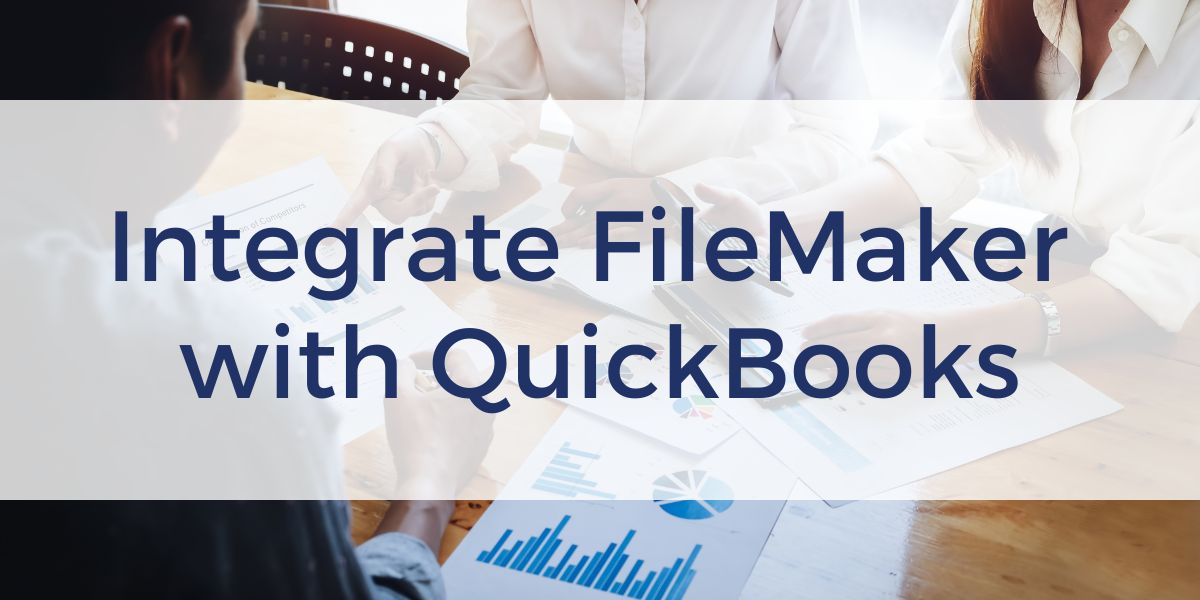
As a FileMaker developer, have you ever been asked the question, "Can you build an integration between our FileMaker solution and QuickBooks?"
If your answer was, “Well, umm, maybe" - then stop right there! You may need to take our new Connect FileMaker to QuickBooks training course at Productive Computing University. Over the years, we’ve learned there are five foundational skills necessary for executing a successful and effective FileMaker to QuickBooks integration and our course will cover two of these foundations out of the gate.
You’ve probably noticed that accounting and/or invoicing is important to your customers or your current employer. If that’s the case, there is a good chance they use QuickBooks since QuickBooks is the number one small to medium business accounting software in U.S. There is also a good chance your employer or your customers would like to connect their FileMaker solution to their QuickBooks file (if they haven’t already).
That’s where we come in. For the past 15-plus years, we’ve been the leading experts on how to integrate FileMaker and QuickBooks (first Desktop and then Online) and we’ve taken that knowledge and rolled it into a comprehensive training course.
Effectively Connect FileMaker to QuickBooks
1. Understanding FileMaker
In order to perform an integration effectively, you need at least an intermediate knowledge of FileMaker. You need to understand how plug-ins work and how you can use them in a robust environment.
How can you determine if you are ready to tackle a FileMaker accounting integration? You will need to know how to create fields, layouts, relationships, portals, calculations, and scripts. If you are able to build files and script layouts from scratch then you are on our way!
2. Understanding Accounting Principles
You don’t need to be a CPA or a bookkeeper - so don’t reach for that test prep material just yet, but you do need to know the basics (hello college accounting class). Some simple things you will want to understand include knowing the difference between a P.O., invoice, credit, and bill. And also how to apply credits to a customer, a single invoice, or multiple invoices.
3. Understanding QuickBooks
It's not necessary to become a QuickBooks ProAdvisor, but it is good to have some QuickBooks Desktop expertise. The more you know, the easier it will be to get started.
QuickBooks and its API can be complex. Having an understanding of Customers vs Vendors, Invoices vs Jobs, and the various lists will give you a leg up.
But if these are foreign concepts to you, don’t worry! We have chapters in our Connect FileMaker to QuickBooks Desktop training course to show you the basics of QuickBooks. We’ll walk through the entire QuickBooks Desktop interface and cover where to find certain transactions and items that are important to your integration strategy. It’s not QuickBooks certified training, but it is certainly enough to get you started and help you perform successful integrations.
4. Understanding the FM Books Connector plug-in
Our course focuses primarily on the FM Books Connector plug-in as the means to connect the two applications. We review the plug-in basically from A to Z. First, you’ll learn how to install and register it and how to authenticate to QuickBooks.
Then the training will move into more specific instruction, such as how to create, edit, delete and push a customer from FileMaker to QuickBooks; how to create an invoice for a customer (that includes line items) in Filemaker and have that reflected in QuickBooks; and how to pull lists and transactions into FileMaker.
We also cover best practices for posting transactions - QuickBooks likes all of its data in a nice orderly and sequential format.
5. Understanding a business’s workflow
This is determined on a case-by-case basis. In order to do a proper and effective integration, you need to understand your client’s workflow. How does information travel between the two applications? Does it all originate in FileMaker or is creation shared evenly depending on the type of information or the department handling the information? At what point do you determine what is tracked in each system. You will need to know the connection points, so you can figure out what to push and what to pull. Make sure this is clear from the beginning - it could save you a lot of headaches.
Check out this video for details on these five pillars, as well as why we created our QuickBooks Desktop integration course and how it can help you.
Or read this blog Understanding FileMaker and QuickBooks Integrations.

Learn more about QuickBooks products and services
- FM Books Connector - QuickBooks Desktop plug-in
- FM Books Connector Online - QuickBooks Online plug-in
- QuickBooks Hosting - FileMaker and QuickBooks hosting service
- Core CRM Pro - FileMaker CRM pre-configured with QuickBooks integration
- Connect FileMaker to QuickBooks Desktop - Do-it-yourself training course
- Connect FileMaker to QuickBooks Online - Do-it-yourself training course
Hire our team to help! We have certified FileMaker developers available to create a secure and streamlined accounting process.

